
by Marc Ring | Sep 16, 2016 | Bullying, Claim costs, Claim management, Injured Worker, Mental Health, Occupational Violence, Work Health & Safety, Workers Compensation, Workplace safety
 Occupational violence is an incident where a worker is physically attacked in the workplace or during work related activities. It also extends to if a worker is threatened in a way that causes them to reasonably believe they are in danger of being physically attacked. With an ageing population, ensuring aged and other care workers are able to cope with the at times aggressive behaviour associated with some types of dementia or disabilities is an important issue for care providers. Recent data shows care workers represent more than 9 percent of NSW workers compensation claims with over 12,000 physical and mental claims made in the recent 3 year period. Addressing workplace bullying and violence be challenging yet SafeWork Australia provide recommendations.
Occupational violence is an incident where a worker is physically attacked in the workplace or during work related activities. It also extends to if a worker is threatened in a way that causes them to reasonably believe they are in danger of being physically attacked. With an ageing population, ensuring aged and other care workers are able to cope with the at times aggressive behaviour associated with some types of dementia or disabilities is an important issue for care providers. Recent data shows care workers represent more than 9 percent of NSW workers compensation claims with over 12,000 physical and mental claims made in the recent 3 year period. Addressing workplace bullying and violence be challenging yet SafeWork Australia provide recommendations.
(more…)
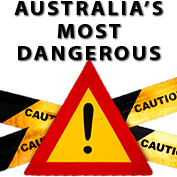
by ABILITY GROUP | Jul 25, 2016 | Injured Worker, Injury Prevention, Work Health & Safety, Workers Compensation, Workplace safety
 Irrespective of the size of your business or industry you work in, workplace risks exist. Businesses that adopt a proactive risk management approach will typically minimise workplace risks, injuries and claims. Regrettably accidents do occur and in tragic situations the death of a worker has impacts beyond the obvious. Fatalities in the workplace not only affect the immediate family, they also cause distress to colleagues, employers and friends. No worker nor their family should face the risk of not coming home from work. We promote it is essential all Australian workplaces take every precaution to ensure their employees return home safe at the end of every day. So what are Australia’s most dangerous industries and the common cause of fatalities?
Irrespective of the size of your business or industry you work in, workplace risks exist. Businesses that adopt a proactive risk management approach will typically minimise workplace risks, injuries and claims. Regrettably accidents do occur and in tragic situations the death of a worker has impacts beyond the obvious. Fatalities in the workplace not only affect the immediate family, they also cause distress to colleagues, employers and friends. No worker nor their family should face the risk of not coming home from work. We promote it is essential all Australian workplaces take every precaution to ensure their employees return home safe at the end of every day. So what are Australia’s most dangerous industries and the common cause of fatalities?
(more…)
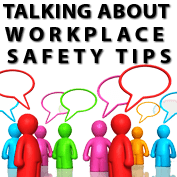
by Marc Ring | Jul 18, 2016 | Work Health & Safety, Workplace safety
 Raising a workplace safety concern with your boss can sometimes seem like a daunting prospect. Not doing so, however, can mean a dangerous incident goes unresolved, potentially injuring you or your co-workers. It could be something like a machine that is missing protective guards, dangerous movement of plant, poor housekeeping presenting trip hazards or speaking up if you see someone being bullied. Alternatively you might feel your training for a particular task was inadequate or you need more help to do a job safely. Whatever the issue, it is important to remember everyone has a right to work in a fair, just and safe workplace. Employers are obligated (as far as is reasonably practicable) to provide such an environment. Read more for tips on how to talk about safety.
Raising a workplace safety concern with your boss can sometimes seem like a daunting prospect. Not doing so, however, can mean a dangerous incident goes unresolved, potentially injuring you or your co-workers. It could be something like a machine that is missing protective guards, dangerous movement of plant, poor housekeeping presenting trip hazards or speaking up if you see someone being bullied. Alternatively you might feel your training for a particular task was inadequate or you need more help to do a job safely. Whatever the issue, it is important to remember everyone has a right to work in a fair, just and safe workplace. Employers are obligated (as far as is reasonably practicable) to provide such an environment. Read more for tips on how to talk about safety.
(more…)
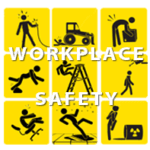
by ABILITY GROUP | Apr 19, 2016 | Claim costs, Claim management, Injured Worker, Injury Prevention, Manual Handling, Mental Health, Work Health & Safety, Work Health Program, Workers Compensation, Workplace safety

Every business can take some simple steps to minimise risk of injury and improve workplace safety. Although office environments can seem less vulnerable to serious injury when compared to industries such as construction, manufacturing, aged care, etc., risks exist across all industries.
Irrespective of the workplace environment steps can be taken to minimise workplace risk. Injuries and claims commonly result from workers tripping, slipping or falling. Poor manual handling activity, incorrect workstation set-up, lack of rest and exercise breaks or strains and other injuries related to posture or repetitive movement are frequent causes of workplace injury. If not addressed, these problems can affect employee productivity, morale and absenteeism rates. Employers can take 8 simple steps to help minimise workplace risks and therefore create safer workplaces for their workers.
Want some simple steps for a safer workplace?
(more…)
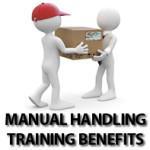
by ABILITY GROUP | Mar 14, 2016 | Health & Wellbeing, Injury Prevention, Manual Handling, Rehabilitation, Work Health & Safety, Work Health Program, Workplace safety
 Approximately 1 in 3 workplace accidents result from manual handling related injuries and inexperienced employees often being at the greatest risk. Whether onsite or in offices these injuries can be avoided or minimised with appropriate training. Good posture and lifting techniques can help reduce the risks. Evidence also suggests workplace changes can also be effective strategy to minimise injuries.
Approximately 1 in 3 workplace accidents result from manual handling related injuries and inexperienced employees often being at the greatest risk. Whether onsite or in offices these injuries can be avoided or minimised with appropriate training. Good posture and lifting techniques can help reduce the risks. Evidence also suggests workplace changes can also be effective strategy to minimise injuries.
(more…)
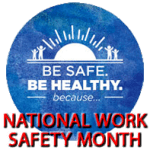
by Marc Ring | Oct 5, 2015 | Work Health & Safety, Workers Compensation, Workplace safety
 October is Australia’s Work Safety Month and the theme of “Be Safe. Be Healthy. Because…” is something we here at ABILITY GROUP are passionate about. What is also important about workplace safety is the consequences injuries have to workers. Depending on the seriousness of the injury, or in the tragic situations of a workplace fatality, government bodies can issue businesses material fines to complement the other effects.
October is Australia’s Work Safety Month and the theme of “Be Safe. Be Healthy. Because…” is something we here at ABILITY GROUP are passionate about. What is also important about workplace safety is the consequences injuries have to workers. Depending on the seriousness of the injury, or in the tragic situations of a workplace fatality, government bodies can issue businesses material fines to complement the other effects.
(more…)

 Occupational violence is an incident where a worker is physically attacked in the workplace or during work related activities. It also extends to if a worker is threatened in a way that causes them to reasonably believe they are in danger of being physically attacked. With an ageing population, ensuring aged and other care workers are able to cope with the at times aggressive behaviour associated with some types of dementia or disabilities is an important issue for care providers. Recent data shows care workers represent more than 9 percent of NSW workers compensation claims with over 12,000 physical and mental claims made in the recent 3 year period. Addressing workplace bullying and violence be challenging yet SafeWork Australia provide recommendations.
Occupational violence is an incident where a worker is physically attacked in the workplace or during work related activities. It also extends to if a worker is threatened in a way that causes them to reasonably believe they are in danger of being physically attacked. With an ageing population, ensuring aged and other care workers are able to cope with the at times aggressive behaviour associated with some types of dementia or disabilities is an important issue for care providers. Recent data shows care workers represent more than 9 percent of NSW workers compensation claims with over 12,000 physical and mental claims made in the recent 3 year period. Addressing workplace bullying and violence be challenging yet SafeWork Australia provide recommendations.

 Irrespective of the size of your business or industry you work in, workplace risks exist. Businesses that adopt a proactive risk management approach will typically minimise workplace risks, injuries and claims. Regrettably accidents do occur and in tragic situations the death of a worker has impacts beyond the obvious. Fatalities in the workplace not only affect the immediate family, they also cause distress to colleagues, employers and friends. No worker nor their family should face the risk of not coming home from work. We promote it is essential all Australian workplaces take every precaution to ensure their employees return home safe at the end of every day. So what are Australia’s most dangerous industries and the common cause of fatalities?
Irrespective of the size of your business or industry you work in, workplace risks exist. Businesses that adopt a proactive risk management approach will typically minimise workplace risks, injuries and claims. Regrettably accidents do occur and in tragic situations the death of a worker has impacts beyond the obvious. Fatalities in the workplace not only affect the immediate family, they also cause distress to colleagues, employers and friends. No worker nor their family should face the risk of not coming home from work. We promote it is essential all Australian workplaces take every precaution to ensure their employees return home safe at the end of every day. So what are Australia’s most dangerous industries and the common cause of fatalities?
 Raising a
Raising a 


 Approximately 1 in 3 workplace accidents result from manual handling related injuries and inexperienced employees often being at the greatest risk. Whether onsite or in offices these injuries can be avoided or minimised with appropriate training. Good posture and lifting techniques can help reduce the risks. Evidence also suggests workplace changes can also be effective strategy to minimise injuries.
Approximately 1 in 3 workplace accidents result from manual handling related injuries and inexperienced employees often being at the greatest risk. Whether onsite or in offices these injuries can be avoided or minimised with appropriate training. Good posture and lifting techniques can help reduce the risks. Evidence also suggests workplace changes can also be effective strategy to minimise injuries.
 October is Australia’s Work Safety Month and the theme of “Be Safe. Be Healthy. Because…” is something we here at ABILITY GROUP are passionate about. What is also important about workplace safety is the consequences injuries have to workers. Depending on the seriousness of the injury, or in the tragic situations of a workplace fatality, government bodies can issue businesses material fines to complement the other effects.
October is Australia’s Work Safety Month and the theme of “Be Safe. Be Healthy. Because…” is something we here at ABILITY GROUP are passionate about. What is also important about workplace safety is the consequences injuries have to workers. Depending on the seriousness of the injury, or in the tragic situations of a workplace fatality, government bodies can issue businesses material fines to complement the other effects.